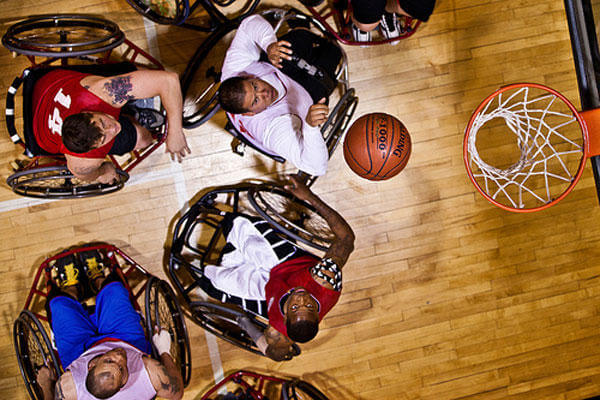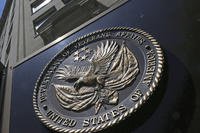Camp Lejeune, N.C. -- The Marine Corps has plans to maintain its existing Wounded Warrior care while the Army trims its own more expansive system and cuts staff after nearly 13 years of war.
"What we're doing right now is what we're going to be doing for the foreseeable future," said Lt. Col. Leland Suttee, commander of the sprawling Wounded Warrior Battalion-East complex at Lejeune and the 200 staff who serve there.
The Army announced plans last month to consolidate operations at its Wounded Warrior Transition Units serving combat and non-combat wounded, injured and ill troops, resulting in the loss of more than 500 civilian and staff jobs.
However, Suttee said the Marines' intent was to stick with the current system. Suttee speculated that "there will be changes over time. Certainly those numbers will come down," he said of the drastically reduced numbers of combat wounded troops coming into the Wounded Warrior program as U.S. forces withdraw from Afghanistan.
"But to me, the demand signal is still out there," Suttee said, as more senior troops, particularly those with multiple deployments to war zones, come to the realization that they were suffering from traumatic brain injury, concussion aftereffects and post traumatic stress.
"I don't see us necessarily on a downward trend" in terms of troops and their families needing the services of the Wounded Warrior Battalions, Suttee said.
Both the Army and the Marine Corps set up Wounded Warrior programs to deal with the special needs of severely wounded combat troops who still wanted to serve. In a setting designed for mutual support, they would live together in their own barracks while receiving care and treatment.
The concept for both services was that those who recovered sufficiently could return to full duty with their parent unit. Others would receive help with the transition to civilian life and Veterans Administration care, and their families would be supported through the process.
As of Feb. 10, there were a total of 6,995 wounded, ill and injured soldiers assigned to 29 Army Warrior Transition Units (WTUs) for active duty troops and nine Community Based Warrior Transition Units (CBWTUs) for Guard and Reserve troops. The number of troops in the program was down from a high of 12, 551 in June 2008, according to the Army's Warrior Transition Command.
Soldiers are assigned to WTUs and CBWTU if they are determined to need at least six months of complex medical care or transition assistance. At the heart of the program is the Comprehensive Transition Plan, a personalized framework of short and long-term goals worked out by the Army and the individual soldier.
Since the units were first set up in June 2007, more than 50,000 soldiers have been assigned to them, and 27,765, or 47 percent, have been returned to duty, the Warrior Transition Command said.
The Army's statistics showed that about nine percent of WTU soldiers had been wounded or injured in combat, and 84 percent had at least one deployment to a war zone.
Last month, the Army announced a "restructuring" of its Wounded Warrior programs "as the service prepares for a scheduled withdrawal of troops from Afghanistan and a continued decline in the number of combat wounded."
Five WTUs nationwide would be shut down by Sept. 30 this year, along with nine CBWTUs, the Army said. At the same time, the Army said, more than 12 new Community Care Units (CCUs) were being set up to provide outpatient care and services for Army Reserve and National Guard soldiers.
The changes would "improve the care and transition of soldiers through increased standardization," and reduced delays in service, said Army Brig. Gen. David Bishop, commander of the Warrior Transition Command and Assistant Surgeon General for Warrior Care and Transition.
At a media roundtable following the announcement, Bishop said that the restructuring would result in a reduction of civilian and military staff in the Warrior Transition Command. There are currently 3,971 civilian and military personnel working at the WTUs and 549 would likely lose their jobs due to "fewer personnel requirements," Bishop said.
Cynthia Vaughan, a spokeswoman for the Warrior Transition Command, stressed that despite the changes "it’s an enduring program. It will evolve."
Over the years, the Marine Corps' Wounded Warrior program, much like the Army's, grew out of off-the-cuff operations that began as casualties soared in Iraq. They now have have evolved into professionally-staffed and multi-layered service providers.
In September 2005, Marine Lt. Col. Tim Maxwell, himself the victim of traumatic brain injury in Iraq, pushed and pleaded for a setting where wounded Marines could heal together. The first Marine Wounded Warrior unit set up shop in an old and unused barracks at Lejeune to house 15-20 severely wounded troops.
Currently, there are about 2,000 Marines in Wounded Warrior Battalion-East at Camp Lejeune and Wounded Warrior Battalion-West at Camp Pendleton, Calif. -- both overseen by a Wounded Warrior Regiment headquarters in Quantico, Va.
Hundreds of other Marines get support from Wounded Warrior programs at their parent units, and hundreds of veterans who left the Marine Corps before the Wounded Warriors began also get support, said Capt. Ryan Powell, a spokesman for the Wounded Warrior Regiment.
The motivating principle behind the program remains the same -- the reinforcement Marines get from healing together in a structured environment.
"We never want that to change," Suttee said. "What's matured is all the supporting structure around it."






























